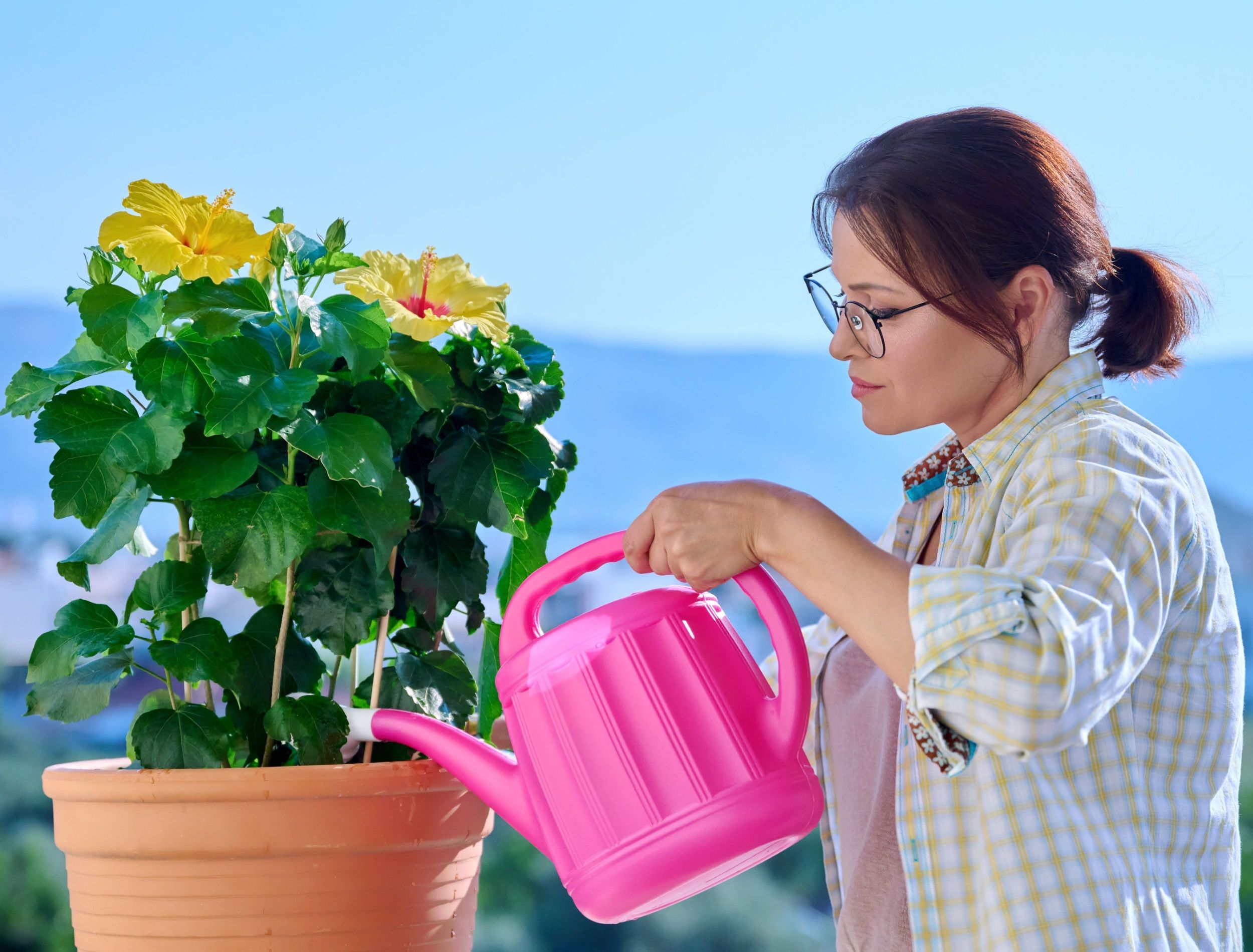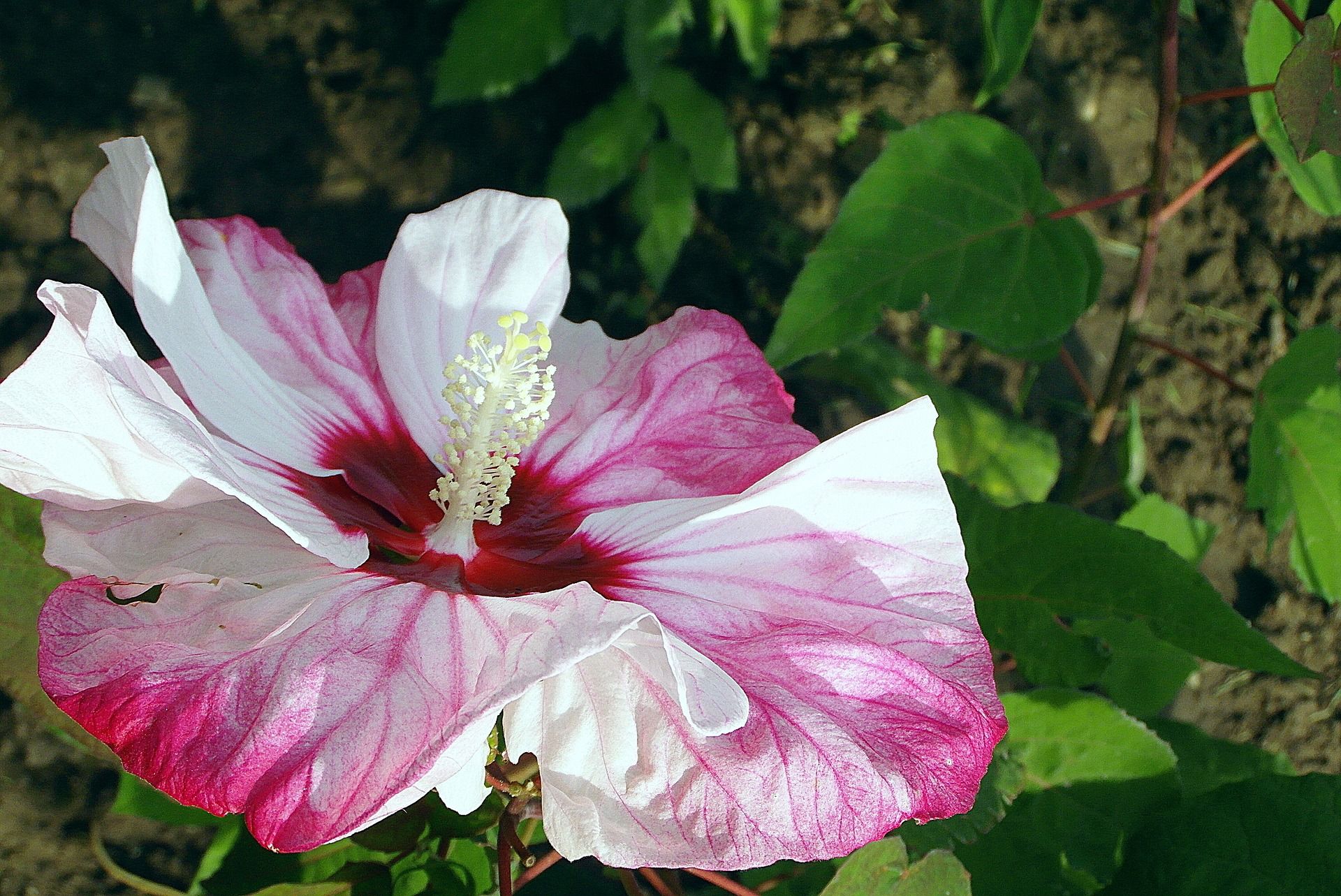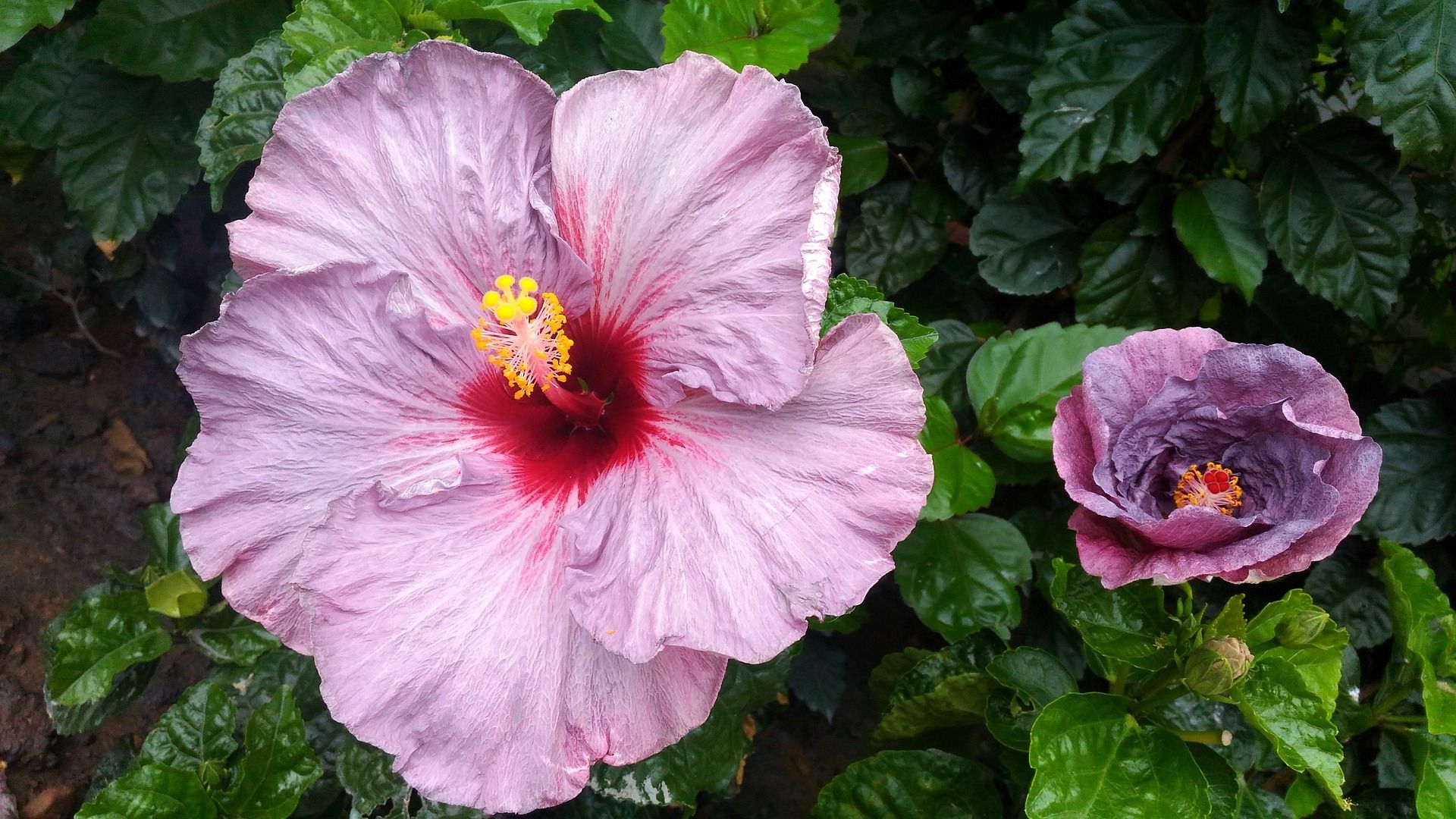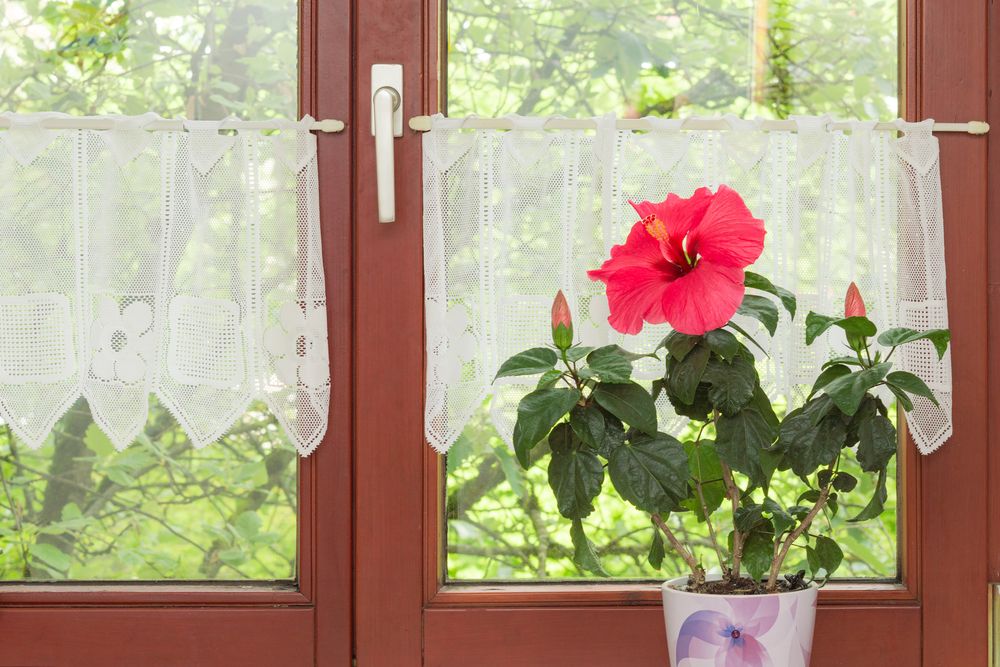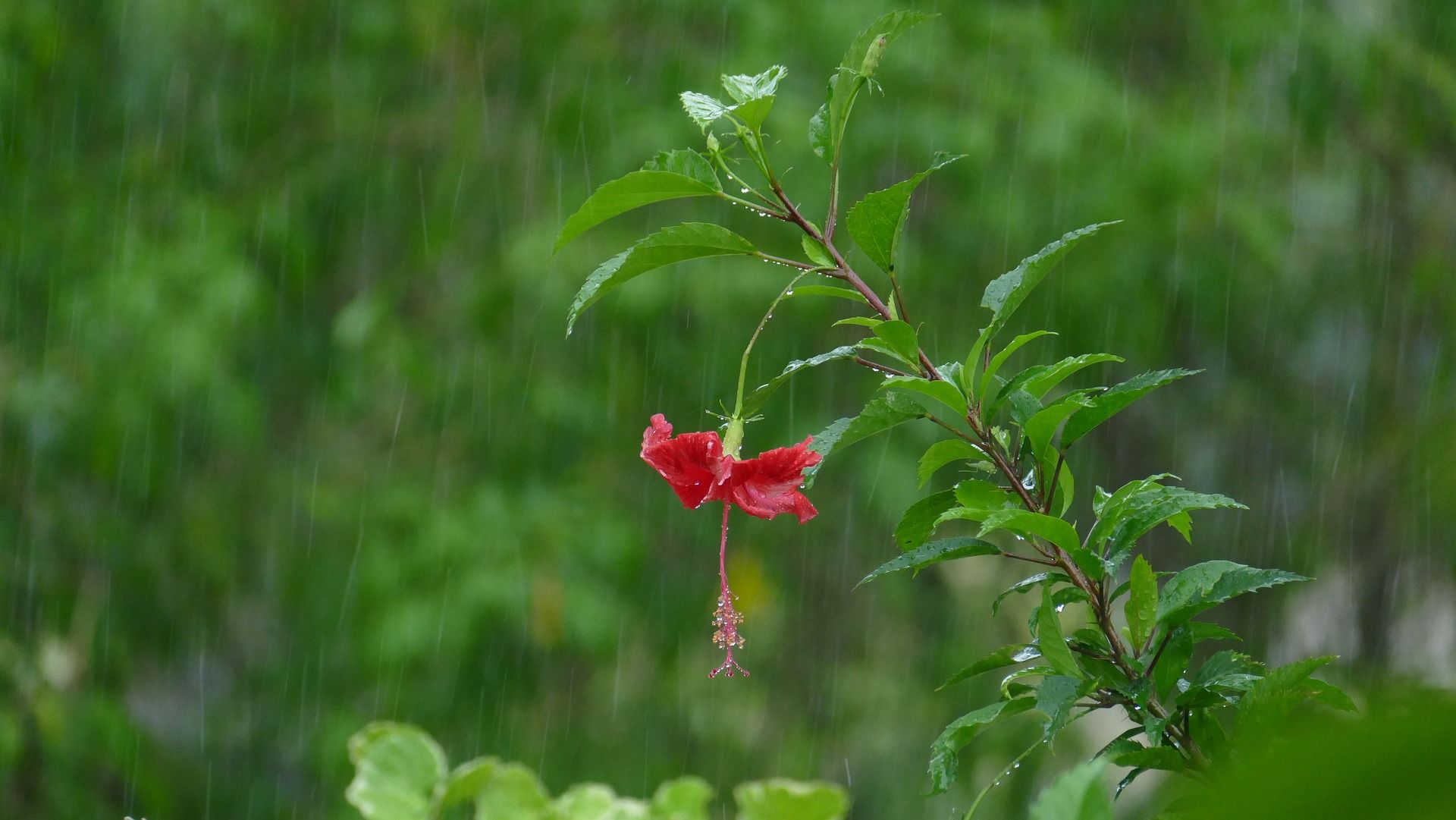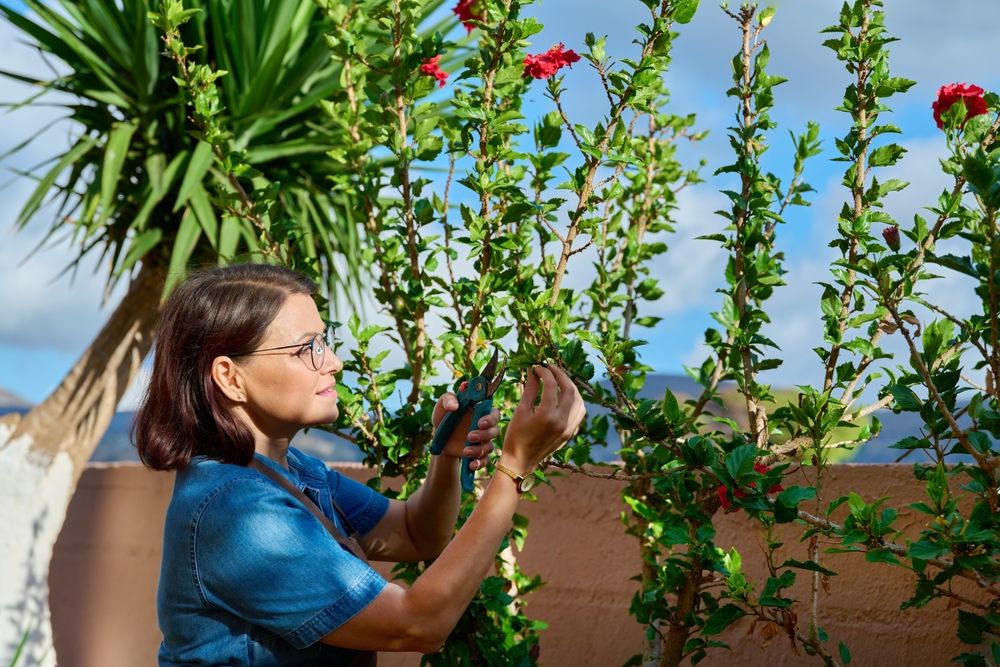The hibiscus plant boasts one of the most gorgeous tropical blooms reminiscent of warm vacations, gorgeous sunsets, and pure relaxation. While you might not live in a tropical environment, you can still grow your very own hibiscus plant. You can either grow it as an annual or a perennial, enjoying the vibrant trumpet shaped blooms in the warmer months of the year.
There are over 200 species to choose from, ranging in size and color, with options including red, pink, purple, and yellow. Fortunately, each variety requires similar care to grow and thrive. Learn the best tips for growing hibiscus, ranging from picking a variety to choosing a location to watering rules to remember.
Choosing a Variety
Image credits: Nowaja via Pixabay
The most important thing to consider when it comes to hibiscus care is the variety you have or need. There are perennial or annual species, some of which are tropical or shrubs. Whether it is perennial or annual affects its survival rate in cool weather or not.
Popular perennial varieties include:
- 'Swamp Rose Mallow' (Hibiscus moscheutos): large flowers with blooms from July through October. Grows 2 to 6 feet tall and 2 to 5 feet wide. Hardy in zones 4a to 9b.
- 'Confederate Roses' (Hibiscus mutabilis): large shrubs that grow 10 to 12 feet high and 8 to 10 feet wide. Blooms from fall through summer with a variety of colors and cultivars to choose from. Hardy in zones 7a through 9b.
- 'Cranberry' Hibiscus (Hibiscus acetosella): tropical shrub grown for its burgundy leaves and purple flowers. Reaches 5 feet in height by the end of summer. Hardy in zones 9a to 11b.
Popular annual varieties include:
- 'Chinese Hibiscus' (Hibiscus rosa-sinensis): grows 4 to 10 feet high and 5 to 8 feet wide. Flowers available in many different colors. Hardy in zones 9a to 11b.
- 'Flower of an Hour' (Hibiscus trionum): this variety has a height of about 2 feet with stunning white blooms. The flowers will blossom from June to October and it thrives in zones 2 to 11.
Where to Plant Hibiscus
Image credits: nyochi via Pixabay
Whether you plant your hibiscus in a container or in the garden really depends on whether you choose an annual or perennial variety. Either option boasts their own perks.
You also have the option to grow the plant indoors in a container year-round! Look for a container that is well-fitting for the root system as the plants prefer to be slightly root-bound. Something around 10 inches usually works best. Always make sure the planter has drainage holes so it doesn't become waterlogged. Since hibiscus prefer to stay moist, look for a plastic or glazed ceramic pot and avoid terracotta and clay.
Planting in a container ensures you can move it indoors when the weather cools down, which is perfect for growing annuals. Also, since you have the freedom to move it around, you can always make sure it gets enough sun.
You can grow hardy perennial hibiscus plants in your garden, but you may need to over winter them. it is best to avoid annuals if you want to see them again next year. Also, consider if your garden has enough space for the mature plant before planting a larger variety. If the variety is tall growing, make sure it isn't exposed to harsh winds that could snap the trunk.
Ample Lighting
Image credits: servickuz via Shutterstock
Both perennial and annual hibiscus plants prefer full sunlight. Some varieties, such as Chinese hibiscus, prefer afternoon shade since the afternoon sun is so warm, so be sure to determine what your specific variety needs. Other varieties, like Rose Mallow, need all day sun. Otherwise, the flower production and plant growth may slow.
For best results, provide six to eight hours of direct sunlight per day.
Pro Tip: In winter, allow the plant to go dormant. By April, move the plant to a sunny location indoors to reacclimatize it. Bring it back outside once all danger of frost passes or continue growing indoors.
Proper Soil and Fertilizer
Image credits: Natalia Duryagina via Shutterstock
Hibiscus plants prefer slightly acidic and loamy soil, so make sure you do a pH test before planting in the ground. Mix in compost to provide nutrients and improve air flow around the roots of the plant. When planting in a container, look for well-draining soils that are specifically for hibiscus plants. You can also make your own as long as you mix soil amendments like peat moss or coir in to improve drainage.
When it comes to fertilizer, either use a time release option every eight weeks or a water soluble option every two weeks. The plants are heavy feeders and grow best with a balanced fertilizer, either 10-10-10 or 20-20-20. Also, indoor plants do best with half strength fertilizer applied monthly.
Note: Use fertilizer only during the growing season, which ranges from spring through early fall.
Ideal Temperatures and Watering
Image credits: dolvita108 via Pixabay
If you are growing a perennial hibiscus in your garden in the right zone, cut it back once temperatures reach freezing. Otherwise, bring your plant indoors once temperatures hit 50 degrees Fahrenheit. If this only happens at night, you can bring it back outside during the day.
Always water hibiscus plants thoroughly to ensure the roots receive ample moisture. As a good rule of thumb, you should water weekly, though this may differ depending on how often it rains in your area. Remember you likely need to water container plants more, perhaps even daily, since they dry out quickly. Also, newly established plants require moist soil to thrive. For both garden and container plants, water when the top inch of soil is dry, but do not allow the plant to dry out any further than that.
Pro Tip: If you notice your hibiscus leaves are wilting, you are not watering the plant enough. This is a sign of under watering and plant stress, which means you'll see less flowers and growth. The plants tolerate overwatering better than they do under watering.
Pruning and Propagating
Image credits: VH-studio via Shutterstock
The beautiful blooms of hibiscus attract hummingbirds and butterflies to your garden, but not so much when they are spent. Remember to deadhead before the old flowers develop seed heads. Prune the plant back a third after a flush of blooms finishes and prune back old growth by a third in spring to encourage new growth. You can also prune to help the plant grow in the shape you want.
You can easily propagate your hibiscus by cuttings or replanting seeds. To propagate a cutting, use a thick, 6 inch long stem, strip off the lower leaves, and place in water for four to five weeks. Then replant in a container with soil. Sow seeds indoors 12 weeks before the last spring frost and then transplant outside once the last chance of frost passes. You can also split perennial hibiscus in the spring and transplant in new locations around your yard, spreading the tropical flowers around.
Enjoy Your Blossoms!
While caring for hibiscus plants requires a bit of time and attention, the enchanting blooms are worth the extra work. Plus, with the right care, they will return each year to your garden, adding plenty of vibrancy and life. The pretty flowers return repeatedly from spring through fall, so you can enjoy the plant for the better part of the year. Remember to provide them with optimal conditions to enjoy their beauty!
Do you have any tips for caring for hibiscus plants? Share in the comments below!

